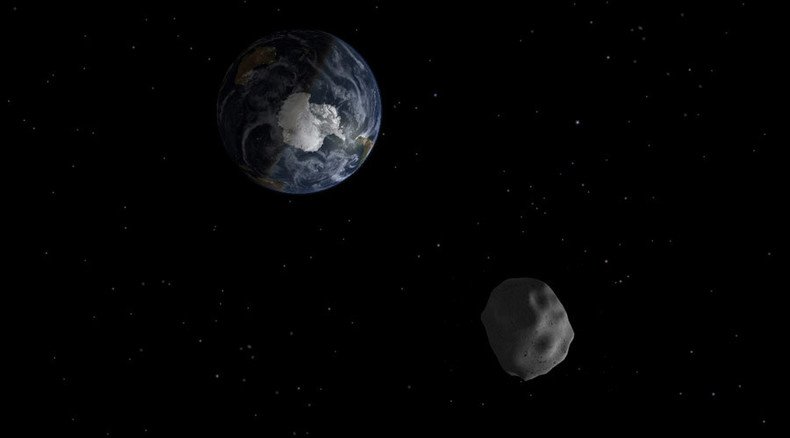‘Extremely eccentric’ asteroid will pass eerily close to Earth on Halloween

When Earth gets paid a visit, Earthlings appreciate some advance warning. Typically that’s a year or more, but NASA was only able to give three weeks’ notice in the case of asteroid 2015 TB145, which is scheduled to make a close pass by on Halloween.
Eerily, NASA Administrator Charles Bolden warned the House Science, Space, and Technology Committee of the possibility of having such short notice two years ago in March 2013.
“From the information we have, we don’t know of an asteroid that will threaten the population of the United States,” he said. “But if it’s coming in three weeks…pray.”
With an estimated diameter of 689 to 2,133 feet (210 to 650 meters) and traveling 78,000 miles (125,529 kilometers) per hour, asteroid 2015 TB145 travels along an “extremely eccentric” orbit and has an encounter velocity of 22 miles (35 km) per second, which is “unusually high,” according to NASA.
Fortunately, the giant space rock, which was discovered only on October 10, poses no threat to the planet’s population whatsoever. Rather, it comes as a pleasant surprise to scientists giddy to get a closer look. Even amateur astronomers with a telescope at least 8 inches in diameter will have their chance.
Asteroid 2015 TB145 orbital diagram. Large asteroid will safely pass Earth on #Halloween. https://t.co/nezXmPnjbspic.twitter.com/lM27xh2JFC
— Epic Cosmos (@EpicCosmos) October 20, 2015The asteroid dubbed 2015 TB145 will be visible late on October 30 and in the pre-dawn of October 31. At about 11:14 am Eastern Standard Time, the asteroid will whiz by us, just 310,000 miles (498,897 km) from Earth. The last time an asteroid came that close to our globe was in 2006, though NASA had seen it coming more than a year in advance. The next large object scheduled to come this close is 1999 AN10, which will pass by at a distance of about 240,000 miles (390,000 km), or about 1 lunar distance, on August 7, 2027.
NASA calculates that all known so-called Potentially Hazardous Asteroids have less than a 0.01 percent probability of striking Earth within the next 100 years. The same odds are given by the Center for Disease Control and Prevention for someone being injured by a toilet in any given year.
“Unfortunately we only know about roughly 1 percent of those asteroids that get down to the 30 meter size, so there’s a tremendous amount out there that we have yet to discover.” Jason Kessler told CNN in an interview this summer, adding that “potentially hundreds of thousands” could be hurtling toward Earth without yet being spotted.
NASA cancels contract with partners in asteroid-hunting project – report http://t.co/2Uul6O4nCFpic.twitter.com/eqLAYBc8KM
— RT America (@RT_America) September 30, 2015To fill this gap, NASA launched a grassroots program called The Grand Challenge in 2013 to encourage amateurs to keep a look out. In addition, NASA has an Asteroid Robotic Redirect Mission dedicated to building an asteroid lander to bump or gravitationally attract asteroids, as well as collect pieces from them for further study.
The most recent case of a meteor doing damage on Earth occurred in February of 2013, when a giant fireball impacted the atmosphere over central Russia. Despite its brightness, it came without warning because of its closeness to the Sun. Although never touching the ground, its explosion 17,200 miles from Earth released 20-30 times the energy of the atom bomb dropped on Hiroshima. About 1,500 people went to the hospital, mostly because of injuries from broken glass and other indirect consequences of the event.
NASA has identified 13,256 Near-Earth objects (NEOs) and classified 1,635 of them as Potentially Hazardous Asteroids (PHAs) due to their size.












